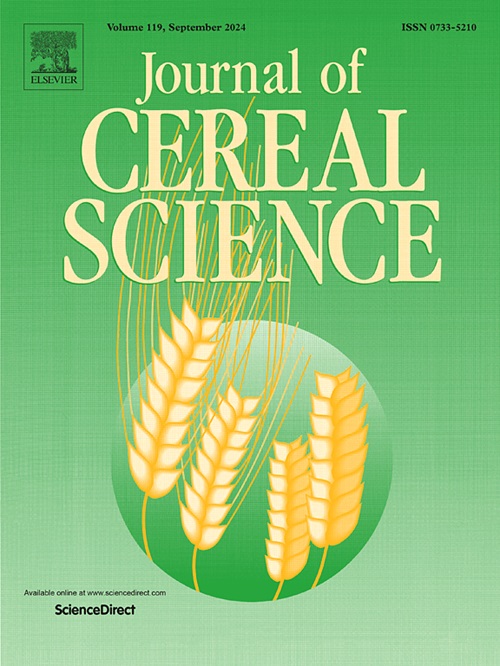Identification and estimation of dietary fibre-induced processes during dough mixing using farinogram analysis
IF 3.7
2区 农林科学
Q2 FOOD SCIENCE & TECHNOLOGY
引用次数: 0
Abstract
During dough mixing, dietary fibre preparations induce a number of processes whose determinants have not been sufficiently elucidated to date. Using an improved farinogram analysis method, seven processes inducing changes in the consistency of model dough enriched with a blend of apple (APL) and cranberry (CRB) fibres were identified and estimated.
The results revealed a significant effect of the composition of the fibre blend and the moisturising pre-treatment of fibres on the course of all the analysed processes. An increase in the amount of the APL fibre, characterised by higher hydration potential than CRB, and the moisturising treatment were associated with greater dynamics of gluten hydration (PhH) and dehydration (PhD) processes, which in turn contributed to the earlier initiation of the development of the dough gluten network (PDT), its chemical dehydration (ChDp2 and ChDp3 assigned to dehydration peaks p2 and p3), and mechanical disruption (MD) as well as flattening of the destructive effect of mixing (FF). Concurrently, the speed of these processes increased and their duration was shortened. The interactions between APL and CRB fibres had the strongest effect on reduction of the PhH rate and an increase in the MD rate in the early phase.

用面粉谱分析识别和估计面团混合过程中膳食纤维诱导的过程
在面团混合过程中,膳食纤维制剂诱导了许多过程,其决定因素迄今尚未得到充分阐明。利用改进的面粉谱分析方法,鉴定和估计了7个过程对苹果(APL)和蔓越莓(CRB)混合纤维模型面团稠度的影响。结果揭示了纤维混合物的组成和纤维的保湿预处理对所有分析过程的显著影响。与CRB相比,APL纤维的水化电位更高,其数量的增加和保湿处理与面筋水化(PhH)和脱水(PhD)过程的更大动力学有关,这反过来又促进了面筋网络(PDT)的早期发展,其化学脱水(ChDp2和ChDp3分配给脱水峰p2和p3)。机械破坏(MD)以及混合破坏效应的平坦化(FF)。同时,这些过程的速度加快,持续时间缩短。APL和CRB纤维之间的相互作用对早期PhH率的降低和MD率的增加有最强的影响。
本文章由计算机程序翻译,如有差异,请以英文原文为准。
求助全文
约1分钟内获得全文
求助全文
来源期刊

Journal of Cereal Science
工程技术-食品科技
CiteScore
7.80
自引率
2.60%
发文量
163
审稿时长
38 days
期刊介绍:
The Journal of Cereal Science was established in 1983 to provide an International forum for the publication of original research papers of high standing covering all aspects of cereal science related to the functional and nutritional quality of cereal grains (true cereals - members of the Poaceae family and starchy pseudocereals - members of the Amaranthaceae, Chenopodiaceae and Polygonaceae families) and their products, in relation to the cereals used. The journal also publishes concise and critical review articles appraising the status and future directions of specific areas of cereal science and short communications that present news of important advances in research. The journal aims at topicality and at providing comprehensive coverage of progress in the field.
 求助内容:
求助内容: 应助结果提醒方式:
应助结果提醒方式:


